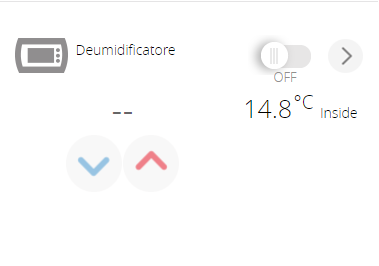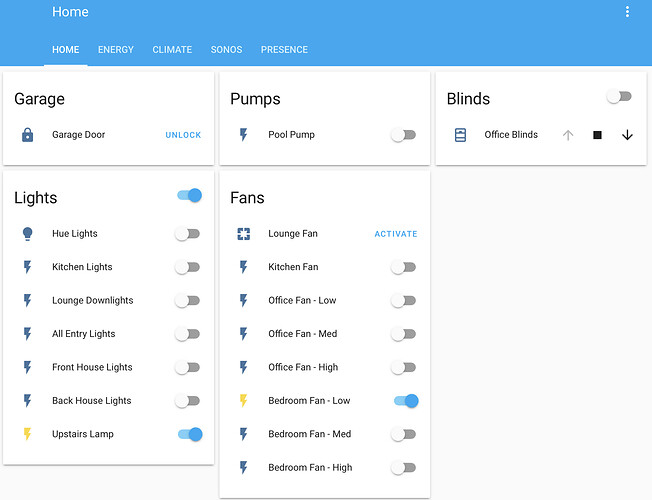Do you have any experience connecting this sensor?
Unlike other Z-Wave Hubs, Vera does not have native integration to TUYA, also there is no TUYA Plug In, most strange given the amount of TUYA/Smart Life devices out there.
As a work around you could use HASS and the corresponding HASS Vera App or wait for Homeseer4 which will have native integration.
I made several attempts to get my developer application approved with Tuya. After several weeks waiting for approval, I sent several follow-up emails but never got a response, not even an auto-reply. Moving on…
^^^
Yes, and thank you for the effort that you put into that, It’s unfortunate that you meet with a stone wall response.
Given that HASS has many integrations with devices that VERA hasn’t, would it be in the realms of possibility for a HASS Plug In ?
This would alleviate many requests for devices that are not VERA friendly but are integrated with HASS?
I’m not a developer so I’m not sure if it could be done, however as the reverse is already possible there could be hope?
This discussion led me to the same thought. Stay tuned… I’m exploring…
I partially already did this integration with… @rigpapa’s site sensor. I am finding that there are too many device types on HASS to be able to completely transparently move HASS entities into Vera’s devices so I used various site sensors to sync up device variables instead and likewise have setup HASS automation to update these variables on the vera when they change depending on how quickly I want the sensor to update.
I use IFTTT webhooks to integrate to some of my TuyaSmart/SmartLife devices. I have also integrated Home Assistant to Vera, Tuya and HomeKit - allowing control of Tuya (switches and blinds/shades) and Vera Devices from Siri or the HomeKit app. It works very well.
As many of you know, I went for a different route. I just wrote my own MQTT-to-Vera publisher (in C#., running on .NET Core under linux) and it’s working very well. While I was there, I wrote a couple of APIs (Telegram, OpenSprinkler, MiLight, Tasmota) and integrated it.
I used it to learn some things about MQTT that could be useful to my job, but I digress. This way I can basically route MQTT messages to variables/actions under Vera, where Virtual Devices could be used to do the opposite.
Home Assistant is able to receive/push MQTT messages, so I still think that a native MQTT broker inside the Vera OS could be a game changer. It’s similar to what site sensor is doing for @rafale77, but it’s nearly realtime and very smooth.
The latest addition to the family is a Tasmota TH 16, running my humidifier, and it’s using a native (virtual) device in order to display humidity, status and so on:

(pardon the Italian name)
Status is pushed to the device via HTTP and the MQTT message enables real time status, thanks to the broker, when switched on locally (or by a rule/timer).
Supporting MQTT natively could make 3rd party integration very easy.
@edward added Mosquitto to the installable packages for me a while back…
echo "src/gz mios http://dl.mios.com/firmware/mt7621_dev/openwrt/ramips/packages" >> /etc/opkg.conf
opkg update
opkg install mosquitto
It’s a start…
Yep, I was exploring that option prior to my implementation, but mosquito was not available at that time.
I’m evaluating deconz to add general zigbee support (mainly for hue strips) and it’s probably one of the options.
need to nudge this topic. as Vera is falling behind in support.
How is development going on the Plug In?
FWIW, Broadlink have released the RM4, which is not supported by the older Plug Ins, it is however (like many other devices not supported by Vera) supported by HASS.
I still use my own broker, written in C# and running on my Linux little box.
I prefer to get wifi devices and convert them to tasmota, that has native mqtt support.
I suggest to get devices that are convertible to tasmota, since they support http endpoints and it’s easier to integrate them. Mqtt is just to sync status, but this is not always necessary.
Did you ever get any response from tuya?
Never. Seems they are not interested in working with independent developers. At this point, even if they came around, I wouldn’t bother, given the impending EOL of the current firmware. My guess is eZLO is going to handle Tuya themselves for the new firmware.
What’s interesting is Tuya themselves are developing a link to SmartThings. They introduced Globe first and now Smart Life. Both…disasters. Globe probably took 6 months to be stable and Smart Life doesn’t work yet, though just out a week.
Hopefully if Ezlo chooses to support Tuya they do it themselves. Relying on Tuya will likely be unstable.
In case you change your mind I have a current support case open with Tuya and I have mentioned this and below is their response:
Dear user, we’re very sorry for the inconvenience. Please provide your developer’s account and details of you specific requirements so that I could help you submit the technical work order here, and the technical staff will do further investigation. You can also send an email to our service email: service@tuya.com. And we will get back to you asap. Thank you for your support and understanding.
Bump…
Picked up a couple of these switches in Australia to control my Xmas lights for a month… so cheap ($17 aud) it would be great to get the ability to turn on/off in Vera…
@Sorin will tuya support be coming??
I doubt it will be for Vera, possibly yes for Ezlo, there was talk of Ezlo creating there own frimware for these devices.
On a side note i have these working with vera, but i do so via node-red and alexa.
Flash them with tasmota. It’s definitely better than someone else’s cloud.
AFAIK Tuya Convert is still a possibility.
FYI, there is a somewhat convoluted way to get local access to tuya devices.
Not sure if anyone wants to use this as the basis for a Vera or EzLo plugin…
And I don’t have any tuya devices, I just heard about this on reddit.

